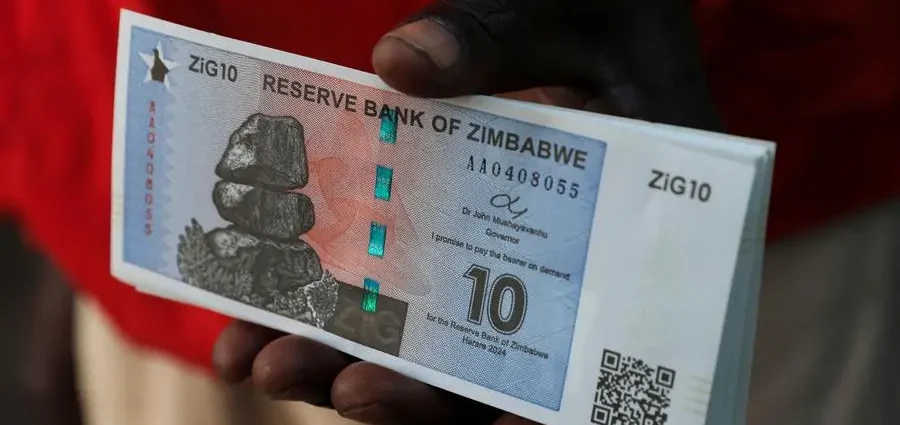Zimbabwe’s deepening liquidity crisis is exacerbating the economy’s reliance on the US dollar, undermining the effectiveness of the gold-backed Zimbabwe Gold (ZiG) currency, introduced nearly a year ago.
Launched on April 8, the ZiG was Zimbabwe’s sixth attempt since 2009 to establish a functional local currency, aiming to replace the US dollar. However, the initiative has encountered significant challenges since its inception.
In September, the Reserve Bank of Zimbabwe (RBZ) devalued the ZiG by 43% after the currency weakened steadily against the US dollar. The central bank also increased the key interest rate from 20% to 35% and raised cash reserve requirements in an effort to stabilize the currency. Despite these measures, the ZiG has depreciated by almost 4% this year.
Eddie Cross, a Harare-based independent economist and former monetary policy committee member, remarked that these tightening policies have only intensified the economy’s reliance on US dollars. He stated, “The liquidity crunch has now killed the ZiG. The ZiG has retreated as a currency of trade, and we’ve effectively dollarized.”
These developments have contributed to a slump in the economy, including a drop in stock prices on Harare’s main exchange, a slight decrease in consumer prices by 0.1% in March, and a scarcity of the ZiG in the informal market.
Currently, the ZiG is primarily used for small transactions, such as utility payments, tax obligations, and partial civil servant wages. However, it remains unusable for essential items like fuel, rent, or medicines. With the highest denomination being worth only about $7.50, enough for six loaves of bread, the ZiG’s utility is severely limited.
Although the currency is backed by over $550 million in gold and cash reserves, its restricted use in vital sectors of the economy has led many to view it as no different from previous failed attempts at establishing a local currency. Jacques Nel, head of Africa macro at Oxford Economics, described the difference between the ZiG and its predecessors as “cosmetic at best.” He added, “It would have taken something extraordinary to convince Zimbabweans that this time is different.”
Despite a 30% surge in gold prices since the ZiG’s launch, the currency continues to face hurdles. Experts, including Hasnain Malik, an emerging-market strategist at Tellimer, argue that the currency’s gold-backed reserves are insufficient. “The level of hard currency reserves backing it is woefully inadequate,” Malik said, noting that Zimbabwe’s exclusion from global capital markets since its debt default in 1999 made the ZiG’s failure predictable.
Nonetheless, the government remains determined to maintain the ZiG. The RBZ has kept interest rates at 35% and reaffirmed its commitment to counteracting inflation and exchange rate instability.
“It’s going to be a bumpy ride, but we are fully committed,” said Innocent Matshe, RBZ’s deputy governor, during a meeting with business leaders on February 13.
The future of the ZiG appears uncertain, with its success largely dependent on the continued backing of the ruling party. Independent economic consultant Tony Hawkins, a former economics professor at the University of Zimbabwe, warned that the currency may follow the fate of its predecessors, which had increasingly short lifespans.
“History has shown that every new currency in Zimbabwe has a shorter lifespan than the one before it,” Hawkins cautioned. “With its limited usage, the ZiG is likely to face the same fate. What else is the ZiG used for except for arbitrage and civil servant wages? I can’t see it surviving much longer.”















